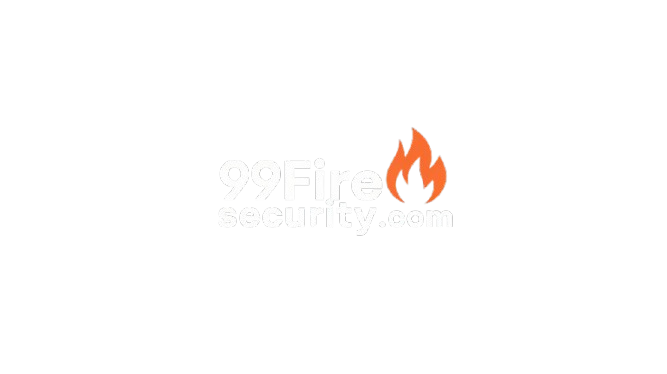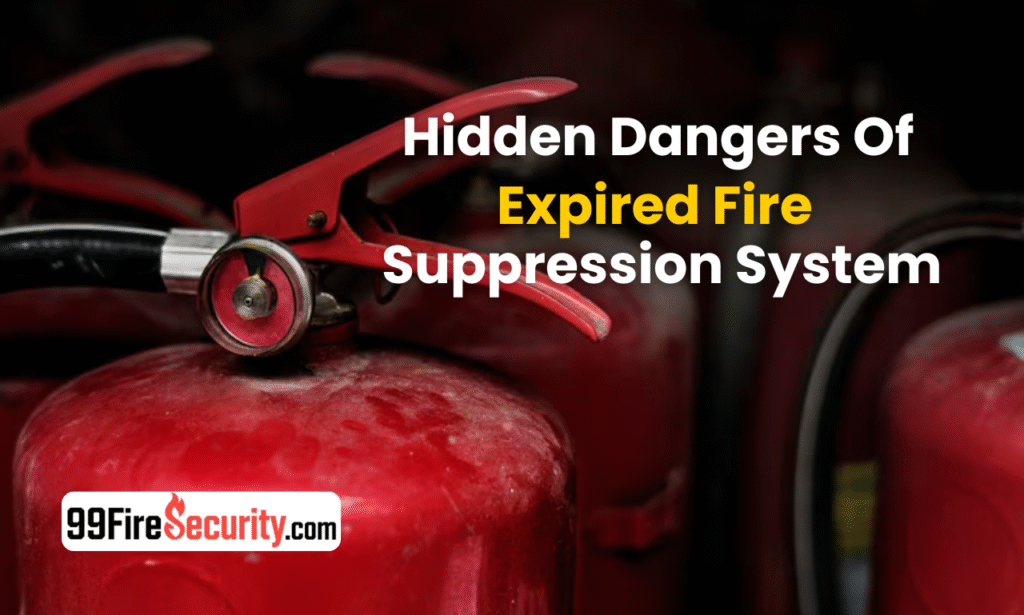Each office has a small kitchen or pantry. This space is normally used to store coffee, hot snacks or food. But actually this place is a serious fire hazard. Every employee in today’s modern office has access to a kitchen. But most people neglect kitchen safety. The chance of a kitchen fire is most noteworthy when hardware is over-burden, or when staff are new with what to do in an emergency.This article highlights a few of the covered up threats that are frequently neglected in office kitchens.We’ll explain real life examples of technical pitfalls and simple safety measures you can take to keep your office kitchen safe.
Pressure from overloaded kitchen devices
Office kitchens often have multiple high-wattage appliances plugged into a single plug board or extension. Running the microwave, toaster, kettle, fridge, and coffee maker all at once creates a serious fire hazard. Overloads in wiring are common. Often low quality expansion boards are used that cannot handle heavy loads. This overload causes the wiring to heat up, melt the insulation and cause sparks.
In a Karachi-based law firm a refrigerator and microwave were installed in one outlet. One day, the kettle turned on and caused a short circuit. The entire pantry filled with smoke. The fire alarm was activated, but due to confusion, no one knew how to use the extinguisher. By the time help arrived, the kitchen was half ablaze. This incident highlights how a simple setup can turn into a major fire hazard when safety steps are ignored.
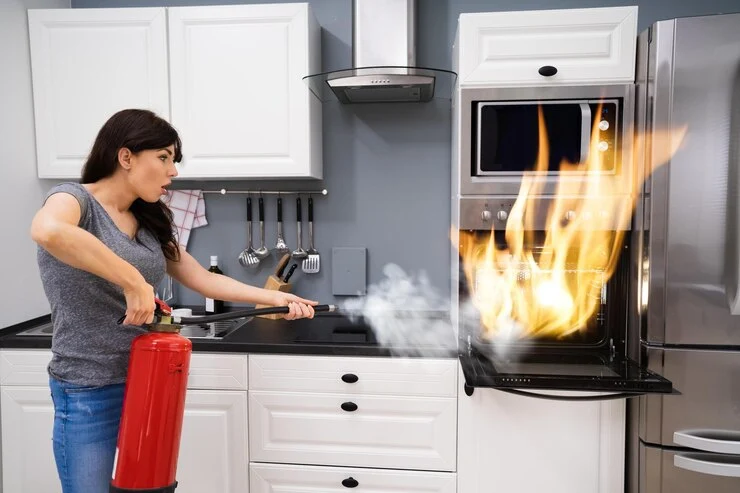
Misuse of Microwave – Basic Misuse
Microwaves are used in every office but misuse is also common. Sometimes foil wrapped food is microwaved, sometimes the bowl is heated with a metal spoon. These small mistakes can lead to sparks and fires. Sometimes old microwaves continue to be used until the door seals or the sensor is damaged .An intern at an IT firm in Islamabad heats up a sandwich wrapped in foil. The foil blew after which the smoke detector was activated. To get everyone out. The interior of the kitchen turned completely dark.
Oil fire and grease hazards
If something is fried in the office kitchen, there is a risk of the grease catching fire. If cooking oil burns, water cannot be used. Adding water expands the sun further. Grease fires can only be controlled with fire blankets or foam extinguishers. But most people do not have this basic knowledge.A staff at a software company used an air fryer, but the tray spilled oil. The fryer was hot, the oil didn’t burn. In a panic, someone poured water and the flame doubled. The day reached the roof.
Poor equipment and neglected maintenance
Appliances like refrigerators, coffee machines, and toasters get hot in everyday use, but their internal wiring is never checked. Old wiring, damaged plugs, and overheating pose a serious fire hazard. The refrigerator compressor runs 24/7. If its fan or coil is dirty, the heat will not dissipate. The compressor overheats and can cause ignition. The refrigerator of a firm in Lahore was 10 years old. The compressor was making frequent noises, but the staff ignored it. One day, the wiring shorted, and a small fire broke out. The whole room was filled with smoke, highlighting how neglected appliances can become a major fire hazard.
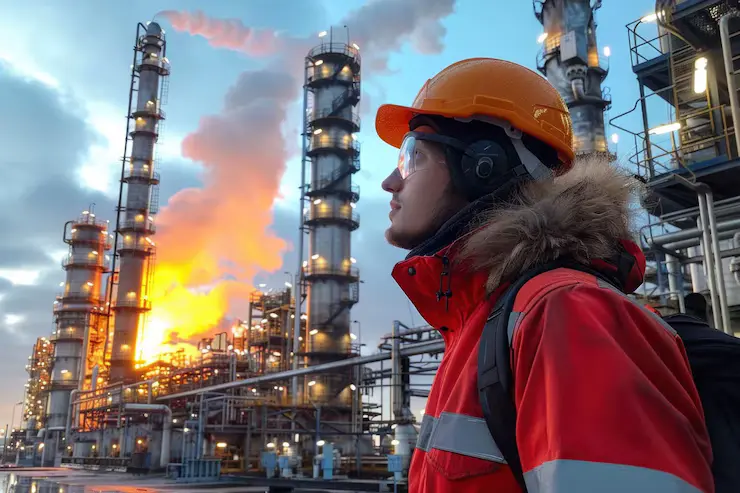
Removing dust traps from exhaust fans and chimneys
Where gas or electric cooking is done, there is also a vehicle exhaust fan or duct system. But their cleanliness was never routine. Smoke and grease particles clog fan blades and chimneys. This obstruction heats the fan. A hot fan can melt the wire and create a spark. In a start-up firm, the exhaust fan had not been cleaned for 2 years. The blades were jammed, and the motor was making noise. One day, the fan flashed, and the cabinet caught fire, turning a simple maintenance neglect into a major fire hazard.
Employee habits and fire behavior
Employees are not aware of kitchen safety. Everyone thinks that the fire brigade will be called long. But the first 2 minutes are the most important in controlling a fire hazard. If the fire is not controlled at that time, the entire floor may be affected. Every new employee should receive a kitchen safety guide during induction. Posters should be put up explaining how to react to each type of fire hazard. Employees should also understand the difference between a foam and CO2 extinguisher to ensure they are prepared in case of a fire hazard.
Kitchen CCTV Monitoring and Safety Audits
CCTV cameras are installed in modern offices but the kitchen areas are neglected. When there is a fire or an accident, there is no video evidence available. CCTV footage is not only important to trace the origin of the fire but also for insurance claims. The kitchen should also be inspected in the safety audit. Electrical inspection and equipment testing should be done every 6 months to prevent any fire hazard.
Inadequate Ventilation Causes Smoke Hazards
Small office kitchens do not have adequate ventilation. When multiple devices work simultaneously, the temperature becomes high. Hot air and confined space double the risk of fire. Smoke detectors also trigger false alarms that disrupt productivity. Annual cleaning of ventilation ducts should be scheduled. Placing and calibrating smoke detectors should be part of the routine.
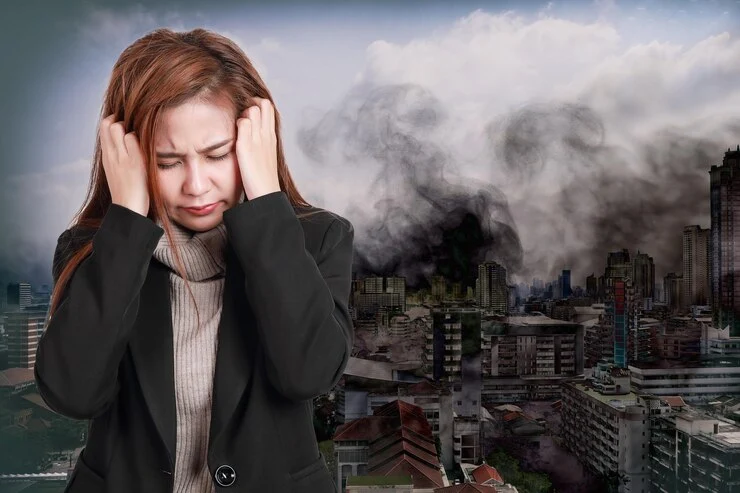
Conclusion
It is a big mistake to think of the office kitchen as a small and harmless place. Every appliance, every wire, and every consumer can be a source of fire hazard. It is not enough to just install a fire extinguisher. It is also important to teach how to use it. Fire awareness should be part of the routine in the kitchen. Fire drills, maintenance, CCTV monitoring and employee education should all be part of this process. If you start a fire safety audit of your office kitchen today you can prevent accidents tomorrow.
FAQs
Q1: What is a common cause of microwave fires?
Foil paper a metal spoon or a faulty door sensor.
Q2: Where should the fire blanket be installed?
In a visible place near a stove or cooking appliance.
Q3: How to inspect the refrigerator compressor?
Back panel cleaning, cooling fan test, overheating test.
Q4: What is the disadvantage of using water in an oil fire?
Water spreads fire, it accelerates the explosion or flame. Using the wrong method to control a fire hazard can make the situation worse.
Q5: How to choose the right type of fire extinguisher?
CO2 for electrical fires, foam extinguishers for grease fires.
Q6: What is the role of CCTV footage in fire safety?
For incident tracking, audit support and insurance claims.
Q 7: How often should fire audits be conducted?
A full fire audit is required every 6 months.
Q8: What is the routine maintenance of exhaust fans?
Remove the blade, clean the grease, and check the wiring.
Q9: How many fire drills should I drill?
Fire drills should be done every 3-4 months, especially focusing on the kitchen.
